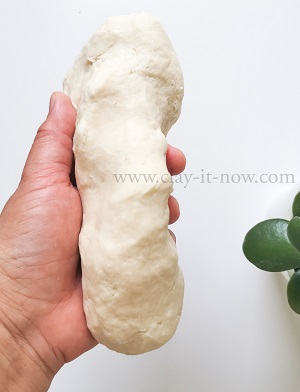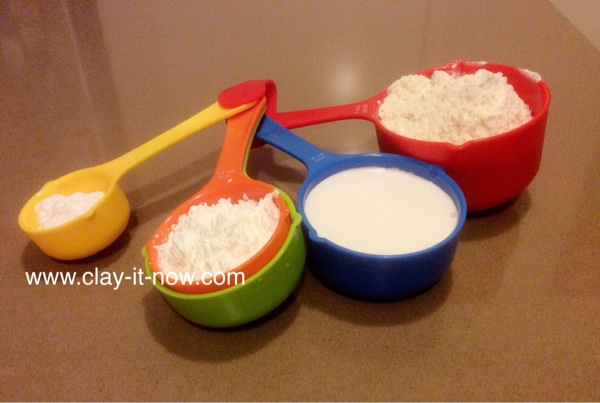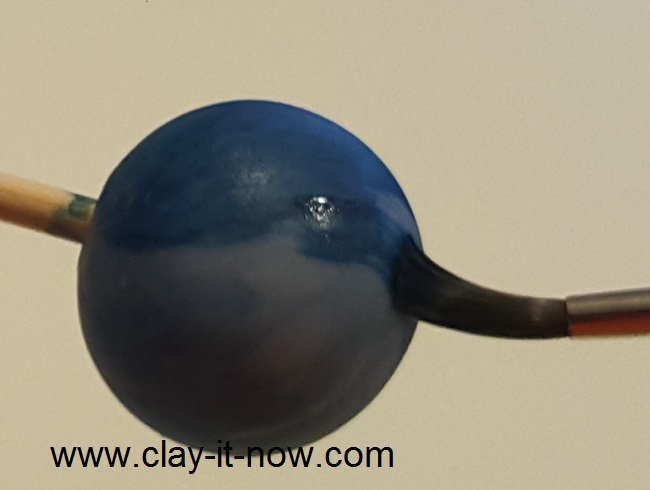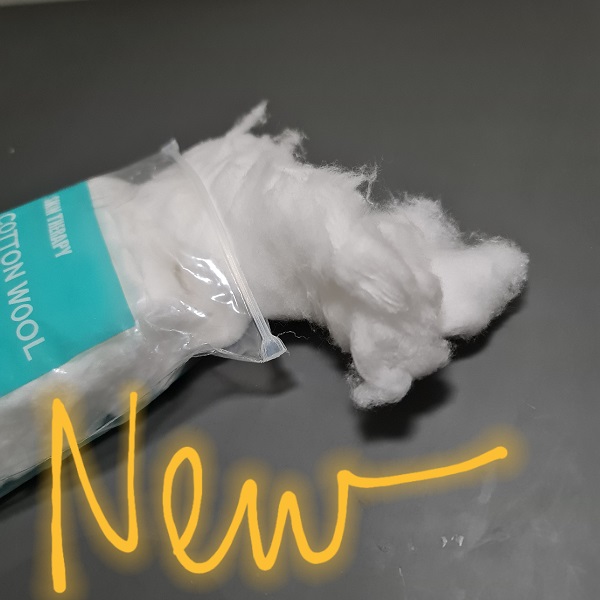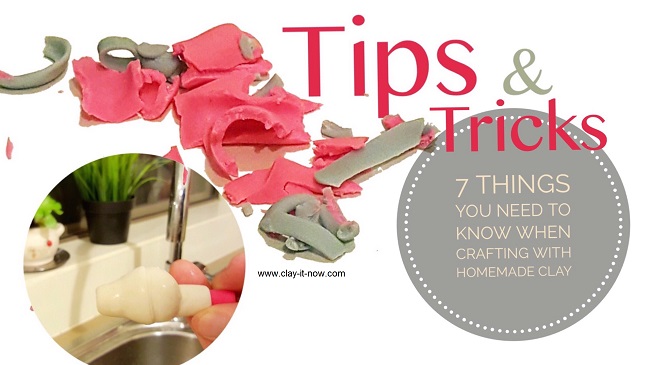Best Homemade Clay
Yes! This is my favorite...
I am not shy to say this is the best homemade clay I've ever made.
Finally, I've decided to share my recipe with you after receiving many nice comments from my website visitors about my cute mini figurines.
Yes, you are right! Most of those cute little things were made with homemade clay. Well, some were with squishy clay/ soft clay I bought online and traditional cold porcelain clay.
The clay I made this time is different with traditional cold porcelain clay. The main ingredient for this clay is flour, not corn flour or cornstarch.
This homemade clay is easier to handle than the cooked one. Yes! No cooking, no stearic acid, no chemical, no building material like gypsum or plaster or other unfamiliar stuffs. It's stretchy, pliable and has never been failed me so far.
FYI, I am a clay lover and a chef for my family, not a material scientist. I don't know much about how the materials react to each other or impacting each other :)
After almost 10 years playing with almost any kind of clay, I started experimenting with homemade clay using material around my kitchen. Yes! I use everyday material that can be found in almost everyone's kitchen which surely safe to handle.
In the past, I used to make traditional cold porcelain clay on the stove but, sometimes I make a good one and sometimes not so good, too hard, and cracks.
After experimenting with flour as base clay material, I have almost the same result every time I make a new batch of clay.
So, I've voted my recipe as the best homemade clay. Yeah...I have the best clay I've always wanted. It dries hard! stays in shape, light, cheap and last for long. It looks like polymer clay.
I think our purpose of making homemade clay instead of buying the clay is to have cheap clay, easy to handle and work well for our craft, isn't it?
Why will you make homemade clay if it is complicated? Honestly, I would rather buy the clay if that so :)
Back to my best homemade clay recipe, it was inspired by the clay made for Chinese dough figurines. If you've ever seen the clay, you'll love it. It's smooth, soft, and the Chinese artisan said will last for decades.
The clay used for Chinese dough figurines was based on plain flour and rice flour. The dough mixed with water and then boiled or steamed.
I've tried to steam the flour, but the clay shrinks a lot when it's drying that causing cracks and ruin my clay model.
Ehm..I don't think I can get complete and detail recipe from those Chinese artisan. I know, it's trade secret :)
Anyway, after some self-study and experiments, I've found my own recipe.
I share every details of experience I have and don't keep any secret. It's my pride and joy to share my recipe with you all.
I want you to have fun and good experience with this recipe as I had.
But...again, I must say I am not a scientist or clay factory.
You may find my measurement was not perfect. Sometimes I add this and that or deleting this and that. Yeah...I keep improving the recipe along the way based on my own experience and your feedback.
Btw, I think you have to experiment with clay making if you are into it until you get it right and then stick to it as your own recipe.
Honestly, different temperatures, and different brand of materials make the final result slightly different.
Alright! I think I've talked a lot:) Let's get to the detail now.
Tools and Materials
My 1st Generation of Homemade Clay Recipe:
- Measuring cups
- 1 cup (250 ml) plain flour (= all purpose flour)
- 1/2 cup (125 ml) Elmer's glue or wood glue
- 1/4 cup (60 ml) cornstarch or corn flour
- Moisturizer (hand/body lotion) - I use Vaseline
- 1 tsp olive oil (or cooking oil)
- 1/2 tsp vinegar
Btw, you can add more vinegar, moisturizer or oil if you feel that the clay is still hard after kneading.
Best Homemade Clay Recipe Improved Version:
Alright! this is my update :)
After receiving many comments from you about the above recipe, I have decided to record my steps and measured the ingredients I used in details.
In the past, I've made the clay based on my feeling. Means, I will add lotions if the clay too hard or add flour if the clay too soft :) And, I expect you to do the same.
But, some of you may just begin with clay craft and have never made homemade clay and confused with it.
Some of you have also asked me to retake my video tutorial with clear steps and measurements and slower pace because my first version video was too fast.
No worries! I have made a new video and happy to share my best homemade clay recipe and tutorial with you.
But.....again, because it is homemade clay, it may give you different result when the weather change, quality of flour, and type of glue used not the same. Nothing is exact. It means, you have to see how the clay coming up and adjust the compositions.
Ingredients:
- 1 cup (250 ml) all purpose flour (= plain flour)
- 1/2 cup (125 ml) Elmer's Glue/ Wood Glue
- 1 tsp olive/ cooking oil and gradually add it up to 1 table spoon (if needed)
- 1 tsp or more (as needed) moisturizer/ hand & body lotion
- 1 tsp vinegar
- 1 tsp baking powder (optional) -> It's not necessary actually.
- 1/2 cup (125 ml) water
- 1/3 cup (80 ml) corn flour/ corn starch
- 1/3 cup (80 ml) all purpose flour (= plain flour)
- First of all, mix item number 1 to 6 in the bowl. (note: after making few batches, I realize that baking powder is not necessary. You can skip this).
- Add water and mix with all ingredients in the bowl Note: you can use electric mixer if you have it but only for few seconds/ fast because the longer you mix the clay with mixer, the softer it becomes.
- Then, add corn flour/ cornstarch - mix with spoon or hands - do not use mixer at this stage.
- Knead the clay lightly. The clay is stretchy at this stage but will be too soft to use.
- Finally, add the flour again (item number 9) and knead the clay for few minutes with hands (update: Don't need 15 minutes though). Stop when the clay smooth and pliable. Your hands will tell you when the clay is hard enough for modelling :)
How to color homemade clay?
The beauty of this recipe is you can use anything to color the clay when the clay still wet or after the clay completely dry. Any brand of paints is good.
You can use food coloring (liquid or powder), watercolor paints, oil paints, pastel, chalk.
Update for best homemade clay recipe:
Wendy Grazier shared her experience making the clay with my recipe.
It was summer in her place, very hot and humid. She have to add about 1/3 cup of flour to have the right hardness add pliable clay.
The other way, it is winter in my place when I play with my clay and recipe so my measurement is perfect for me.
Summary? I think you need to tweak the measurements to suit your weather conditions and follow your feeling when kneading the clay.
Another thing, after making few batches of clay, I've found that adding few sheets of tissue paper onto the clay make it even better. It's super best homemade clay :)
I meant the clay dry super hard and strong. It is now become my favorite clay for sculpting, not just for making miniature or small figurine.
You can see the texture of best homemade clay slightly different after adding tissue paper as shown at below video. It's no longer stretchy but the clay becomes stronger than before.
This paper clay would be perfect for making craft project like mushroom fairy house jar, etc.
Another update/ Tips:
FYI, we have summer in Melbourne now and there were days with 40 and 45 degree Celsius.
My clay seems softer than usual. I've added few spoons of rice flour and tapioca starch (any brand) in equal measurement to my best homemade clay when kneading.
Voila! I feel the clay is better when I touch it. Also, it takes detail better and less rubbery than before. Magical!
This is what I meant with keep improving while doing it to make your clay the best homemade clay you've ever made with your own hands.
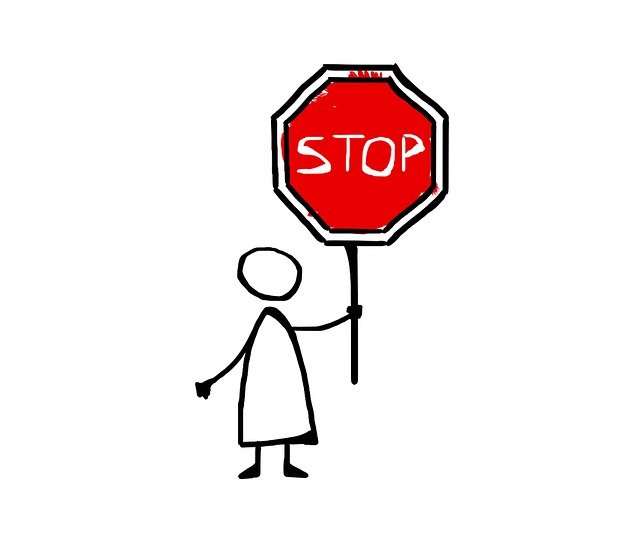
Are you still here? Alright! let me share my new finding to improve this best homemade clay recipe. Recently, I mix tissue paper with wet clay. Basically I mix the first part of flour with all liquid ingredients then add the tissue paper. After that, I add another part of plain flour and few spoon of rice flour and tapioca flour. The result? superb! You will love it.
You can see how I add that tissue paper to wet ingredients in one of my craft projects when I make egg cup as below.
Latest update
I am curious on how to improve my best homemade clay recipe performance.
Until now, I can't preserve the clay. It always moldy and smelly If I keep it too long. That's why I always work with fresh clay. It means I make small amount of clay for each craft project I am doing.
The fresh clay performance is very good so far. As you can see on my mushroom fairy houses project, it looks like new until now after few years.
I did another experiment when doing cornstalk/ autumn fairy house project. I add cotton wool to the basic clay recipe. Gosh, the clay becomes stronger. Even stronger than adding tissue paper/ paper clay.
I can pull the clay very looooooooong :) without breaking. It's very tough when wet and dry.
It's very strong that I can hold the bottle from one of cornstalk's tip. This clay would be best to wrap the jar/ bottle.
However, it's not easy to cut the clay with clay knife to make small details.
Watch my cornstalk video below to see how the clay look like and share your opinion.
You may also like below video
| Home | ^Top of the Page | DIY Fairy House Ideas |
Please LIKE, SHARE and SUBSCRIBE to support my channel.
Share your craft
Do you make your craft? Share it!
